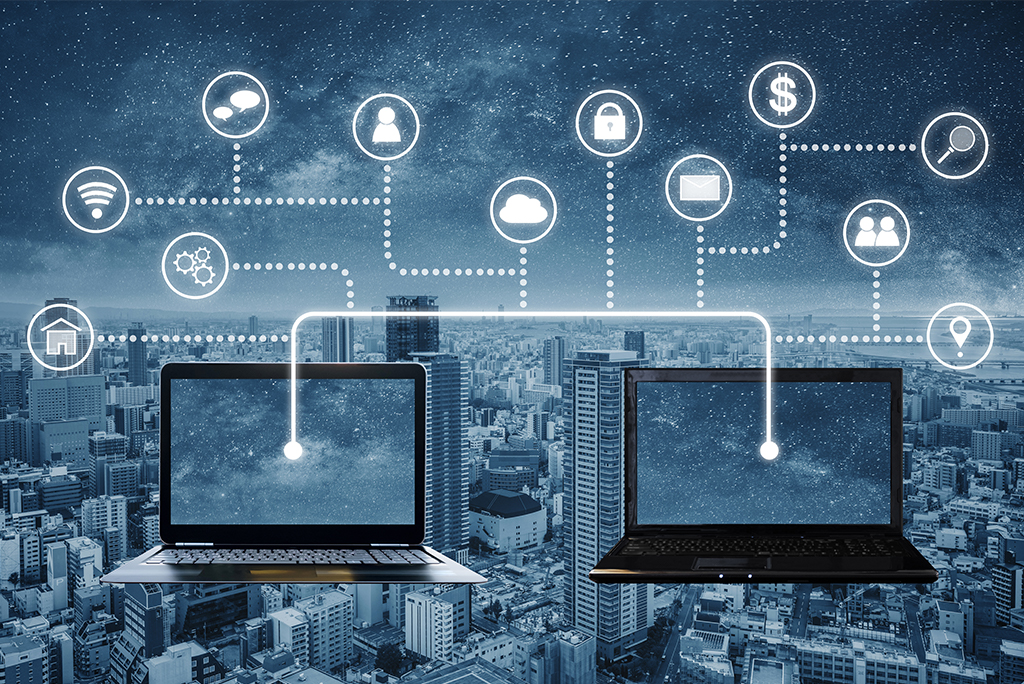This digital age has revolutionized how we connect with each other, communicate as well as conduct our business. As the digital world grows and the risks that come with it. From traditional firewalls to introduction AI, the development of security for networks has been rapid and groundbreaking. The increasing dependence on the web, cloud computing and connected devices requires more innovative secure solutions that are proactive and to be more efficient. The journey of network security has been marked by consistent innovation, and its latest frontier artificial intelligence promises to redefine how we approach cybersecurity challenges.
The Foundations of Network Security
In the beginning days on the web, security for networks was heavily dependent on perimeter security measures. Firewalls were gatekeepers, checking outgoing and inbound traffic according to pre-determined rules. They worked in a time where threats were not as sophisticated and networks were better protected. Filtering packets, stateful inspection and proxy functions were the mainstays of the early firewalls, providing the most basic but essential security layer.
As networks increased more complex and the threats became more complex conventional firewalls began to reveal their weaknesses. Cybercriminals came up with more advanced ways to get around these defenses such as threats like malware, phishing and zero-day vulnerabilities. A static approach to firewalls based on rules could not compete with the changing landscape of cyber-attacks.
The Rise of Intrusion Detection and Prevention Systems
To overcome the shortcomings of firewalls, businesses started adopting Intrusion Detection Systems (IDS) and Intrusion Prevention Systems (IPS). These tools gave greater visibility into network security activity and were able to detect unusual patterns and behavior. IDS solutions were focused on alerting administrators of the possibility of threats, while IPS went one step further by actively preventing the activities that are malicious.
Despite these improvements, IDS and IPS solutions were usually reactive in their the sense that they were reactive. They relied on well-known signatures or pre-defined heuristics that could be used to detect security threats. This meant that they were not as effective against sophisticated or new attacks. In addition, they typically produced a large number of alerts, which led to alert fatigue, making it difficult for security personnel to determine the most actual dangers.
The Emergence of Unified Threat Management
As companies sought out more complete options, Unified Threat Management (UTM) systems were developed. These platforms combined various security functions, including firewalls, antivirus, IDS/IPS, as well as content filtering into a single device. UTMs streamlined security management and simplified the task of managing various single-point solutions.
Although UTMs provided greater efficiency and improved integration, they were not without challenges in terms of scalability or performance. As mobile devices and cloud computing increased in popularity traditional on-premise security devices had a difficult time keeping up with the speed of technological advancement. This shift in infrastructure as well as usage patterns led to the need for more flexible and smart security solutions.
The Shift to Cloud Security
The advent of cloud computing profoundly altered the way that organizations control the IT infrastructure. As data and resources moved beyond the traditional perimeter of network security models had to change. Cloud security became an essential component of modern security strategies, with a focus on securing applications, data and services hosted on cloud environments.
Cloud security is a mix of policies, technologies and safeguards designed to protect cloud-based systems. It tackles issues like security breaches, configuration errors as well as unauthorized access. Contrary to traditional security methods cloud security is able to function in highly dynamic and distributed environments which requires more agility and automated.
To increase security in cloud environments Organizations are increasingly adopting Zero Trust architectures. This approach is based on the assumption that all users and devices in or out of the network, is secured in default. Instead constant verification and least privilege access are used to limit the chance of unauthorized access to and movement lateral inside the network.
Artificial Intelligence: A Game Changer in Network Security
The introduction of artificial intelligence in security of networks is a crucial change in the fight against cyber attacks. AI provides the capability to examine huge quantities of data, spot patterns, and spot irregularities in real-time. In contrast to traditional security tools that rely on static rules or signatures, AI-powered security tools can learn from previous experiences and adapt to the latest threats.
Machine learning, which is a part of AI plays an important part in improving security of networks. By educating algorithms using historical data Machine learning models are able identify normal behavior and flag any deviations that could indicate a threat. This proactive approach allows quicker detection and responses and reduces the opportunity to attackers.
AI is also a key component in the automation of security routines including security threat hunting or incident response as well as vulnerability management. Automation does not just increase efficiency, but it also allows security teams to concentrate on more strategic tasks. In a time when cybersecurity professionals with the right skills are not in abundance, AI helps bridge the gap by increasing the capabilities of humans.
The Role of Behavioral Analytics
One of the main application of AI in security of networks includes behavioral analysis. Through monitoring the user’s and entities’ behaviour, these systems can establish baselines and identify suspicious activities that could indicate the presence of insider threats as well as compromised accounts. Behavioral analytics provide context-aware information which allow more accurate detection of threats and decreasing false positives.
In the case of an employee is able to access sensitive information at a different moment or from a different area, the system could issue an alert or trigger an emergency response. This type of security can help organizations respond to security threats in a prompt and specific manner, thus preventing the possibility of breaches before they get out of hand.
AI-Driven Threat Intelligence
Threat intelligence is the process of gathering and analyzing data about new or emerging dangers. AI helps in the process by sorting through huge data sets from a variety of sources, identifying the most relevant signs of compromise, and linking them to well-known attacks. This helps organizations keep ahead of adversaries by anticipating their strategy and prepared to respond accordingly.
Artificial Intelligence-powered platforms for threat analysis provide real-time updates as well as practical insights, assisting security teams to prioritize their efforts and efficiently allocate resources. With continuous learning and improvement these systems can adjust to the constantly changing threats and provide more precise assessments.
The Future of Network Security: A Hybrid Approach
As security for networks is constantly evolving an method that blends traditional techniques. AI-driven technology is becoming the most effective method. Although firewalls, IDS/IPS and other tools that are foundational remain important, their efficiency can be greatly improve when they integrated by AI capabilities.
This hybrid approach draws upon the strengths of human and machine intelligence. Moreover, security analysts benefit from AI-generated insight which allow them to make better well-informed decisions and deal with threats with greater efficiency. In the same way, AI systems can learn from human feedback, increasing their efficiency and reliability as time passes.
The introduction of AI in security of networks is also a significant issue in terms of privacy, ethics and governance. Also, making sure the AI algorithms are clear that they can explained and are free of bias is essential for maintaining the trust and accountability. As AI technologies become more widespread organizations must create clearly defined policies and oversight procedures to govern their use.
Conclusion
The shift of firewalls towards AI has led to a radical change in the world of security in networks. What began as a basic perimeter defense has now evolved into a complex multi-layered strategy that makes use of artificial intelligence to remain in front of cyber-attacks. In addition, the increasing importance of cloud security and increasing complex nature of today’s network security. They require intelligent, flexible solutions that operate on large scale and in real time.
In taking on AI and incorporating it in their security frameworks, organizations can increase their capacity to recognize, prevent and deal with threats. But this transformation should guided by a thoughtful implementation, ethical considerations and a commitment towards continuous improvements. As technology advances in the near future, the future of security in networks will be determined by its ability to grow to adapt and improve its capabilities, and outwit even the most resistant adversaries.
In this era of change of network security, it’s no anymore just about constructing walls. It’s about creating intelligence. The merging of traditional security with modern AI capabilities opens a new chapter in the search to safeguard the digital realm.


